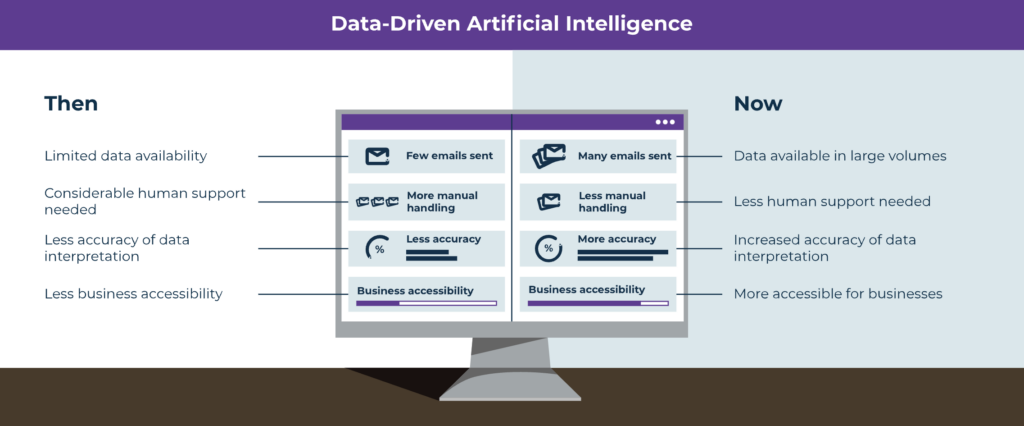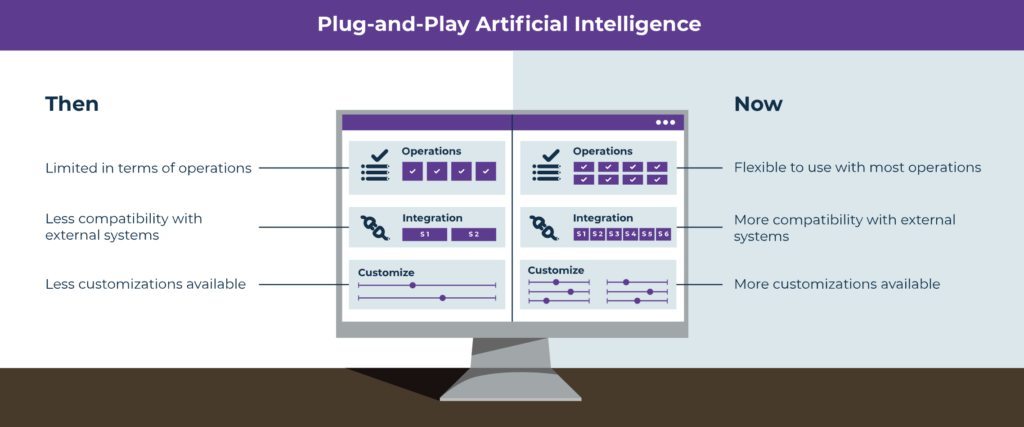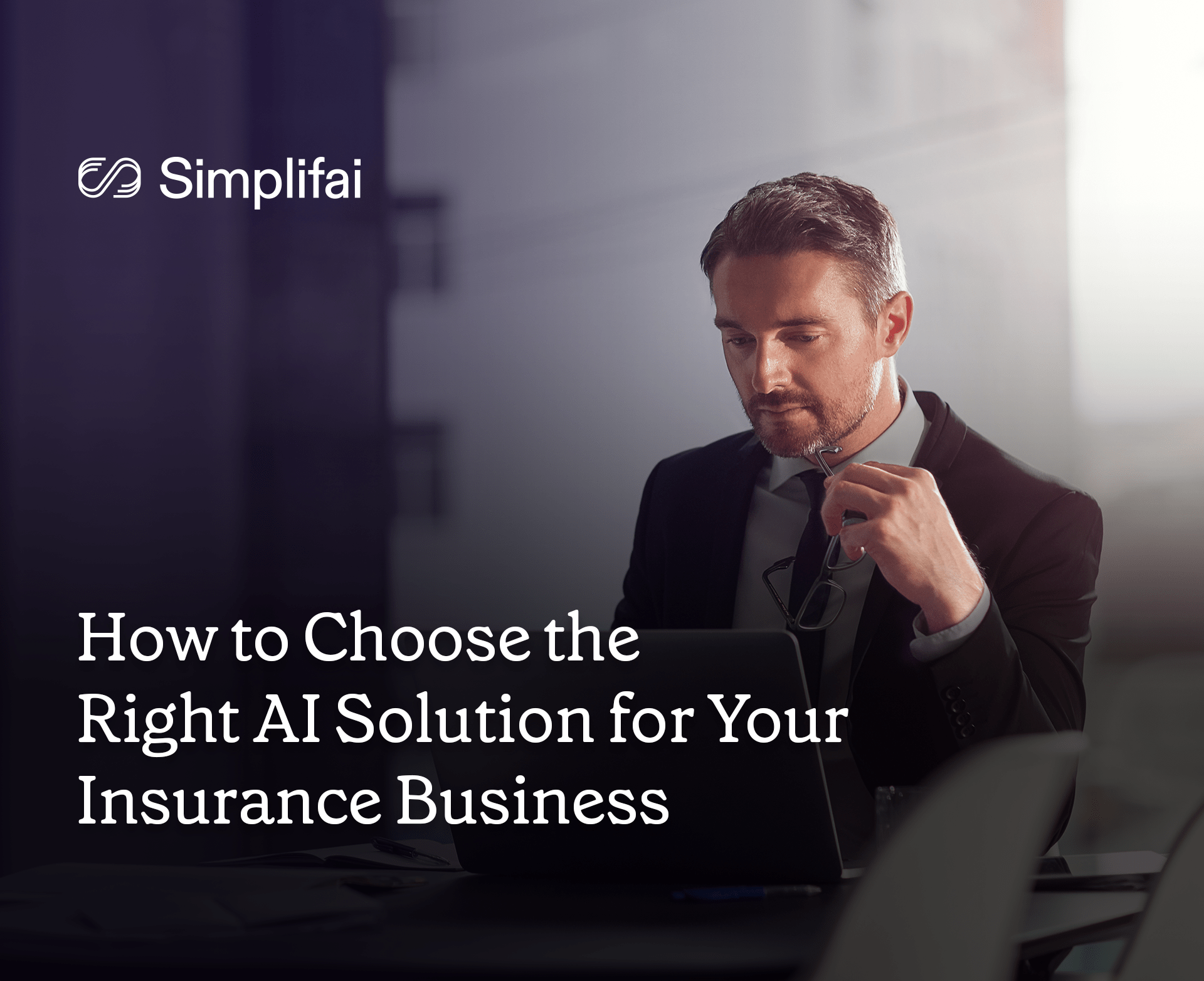Artificial Intelligence is now more within reach for your business than ever
Long gone are the days when Artificial Intelligence (AI) was thought to be a futuristic technology that was only used in research & development, scientific organizations, and military purposes.

Long gone are the days when Artificial Intelligence (AI) was thought to be a futuristic technology that was only used in research & development, scientific organizations, and military purposes. In fact, AI is now used more commonly than the general assumption of it being a tech that is still in its nascent stages [1]. In the business environment, AI is already implemented in different forms such as business automation, conversational bots, pattern recognition, etc. to name a few.
When it comes to adopting AI in a business workflow, it is important to know about its core USPs. This will help businesses broaden their understanding of the possibilities offered by AI innovation and dispel any myths about it being too complicated from a practical perspective. This blog enumerates a few of these core USPs that indicate AI is no longer as difficult as it was thought to be, for adopting in the business world.
Implementing a data-driven approach to Artificial Intelligence
When Artificial Intelligence started being commercially used not long ago, the associated tech revolved around its software features such as limited text recognition, simple pattern recognition, and basic chat predictions. As limited data was available to make this approach work, the end-user benefits were also finite and restricted to only particular processes [2]. This is the conventional or traditional business automation that involved limited use of AI, and it also required human support to a considerable extent.
This was a key reason why businesses earlier often assumed that AI was too complicated for practical implementation at work.
The technological innovations in AI that occurred later paved the way for more sophisticated business automation solutions and brought in advanced software features along with a rapid increase in data availability. The AI that powered these solutions started becoming more capable of operating and adapting to a continuously changing influx of data. The performance of this AI was dependent more on the quality of data fed for training, and less on the software being used.

The shift witnessed by AI solutions from being software-centric to data-centric, made them become more accessible for businesses. Such modern solutions have also simplified monitoring and control of data used for configuring the solution. Furthermore, this approach allows subject matter experts to have knowledge about specific types of data structures to create smart AI solutions, making them simpler and more accessible for businesses.
Plug-&-Play Automation for Artificial Intelligence
The early AI solutions and respective software platforms used for their creation were notably rigid in terms of daily operations. Most of the AI solutions had to be made from scratch and through extensive hours spent on code writing. Several limitations arose as a result such as less work capacity, less accuracy, compatibility issues with third-party systems, and so on.
The rollout time also got hampered due to these limitations, further affecting implementation and making it more rigid to control and monitor.
In contrast, businesses today have the opportunity to implement AI through automation platforms that are flexible enough to be customized as per changing business requirements. In these platforms, the basic building blocks of an automation solution are already pre-configured. Businesses only need to apply specific business rules and logic, train the product and deploy it in the workflow systems.
These platforms also enable the integration of an automation solution with third-party systems using Application Programming Interface (API) or Robotic Process Automation (RPA). Thus, a business does not need to spend a lot of time on creating a solution from scratch, as was the case earlier with complex AI solutions.

Thus, such plug-and-play AI automation can make peripheral business processes become simpler and more efficient. With this, organizations can power many of their core processes with AI platforms and be less dependent on human support, to save time and effort at both the front and back end.
No-code and low-code Artificial Intelligence
Another key indicator that shows how far ahead AI technology for business automation has reached, is the rapidly increasing use of no-code and low-code AI. Low-code automation is the approach to automating daily business operations through cloud-based SaaS (Software as a Service) products that need minimal coding at the back end. Similarly, no-code automation is the approach to automating daily business operations without writing a single line of code.
In the past, creating and implementing AI in a workflow meant spending extensive hours manually writing code. However, a new paradigm of AI emerged that enables businesses to create, configure, and train their customized AI solutions without any coding processes involved. Both these approaches provide immense benefits such as user-friendly customization, cost and time saving, no specialized and skilled resources required, and accelerated operations.

With features such as drag-and-drop functionality, out-of-the-box functions, and the reusability of pre-configured AI modules, it becomes easier for businesses to implement AI in different work domains. Anyone without any prior knowledge of code writing and just peripheral knowledge of workflow processes can create their own AI using no-code and low-code platforms.
Inference
In today’s tech-powered work environment, it is crucial for businesses to adopt an end-to-end automation strategy, especially while using AI solutions. The three indicators: data-driven approach, plug & play platforms, and no-code & low-code automation, are prime signatures of AI innovations that have now ensured that AI is no longer like a herculean task to execute for businesses.
The future of AI for businesses is aligned with end-to-end automation that existed before as a concept and now has already turned into reality. Businesses now no longer need to rely on learning or developing specific skills to understand and deploy AI-based automation solutions that can streamline daily operations and help them scale faster in less time.
About Simplifai
Simplifai is an AI solutions company that provides end-to-end automation for businesses through AI-powered Digital Employee solutions. Our Digital Employees are capable of interpreting unstructured data or free text and can be easily configured in our no-code, plug-and-play platform called Simplifai Studio.
Simplifai Digital Employees comprise individual AI modules such as Emailbot, Documentbot, and Chatbot, which are pre-configured in the Simplifai Studio. Powered by Natural Language Processing and operating with the help of customizable business rules, decision engine, and rules engine, our Digital Employees can be seamlessly integrated with external third-party systems by using Application Programming Interface (API) and Robotic Process Automation (RPA).
Want to know more about our Digital Employees? Click the button below for more information:
Sources
[1] Lehtimäki, P. Artificial intelligence is within your reach (2020), Gofore. https://gofore.com/en/artificial-intelligence-is-within-your-reach/
[2] Ng, Andrew. AI Doesn’t Have to Be Too Complicated or Expensive for Your Business (2021). AI & Machine Learning, Harvard Business Review. https://hbr.org/2021/07/ai-doesnt-have-to-be-too-complicated-or-expensive-for-your-business?registration=success
[3] Matveeva, S. Competing In The Age Of AI Is Simpler Than You Think (2020), Forbes. https://www.forbes.com/sites/sophiamatveeva/2020/02/25/competing-in-the-age-of-ai-is-simpler-than-you-think/?sh=69ea534d2124


